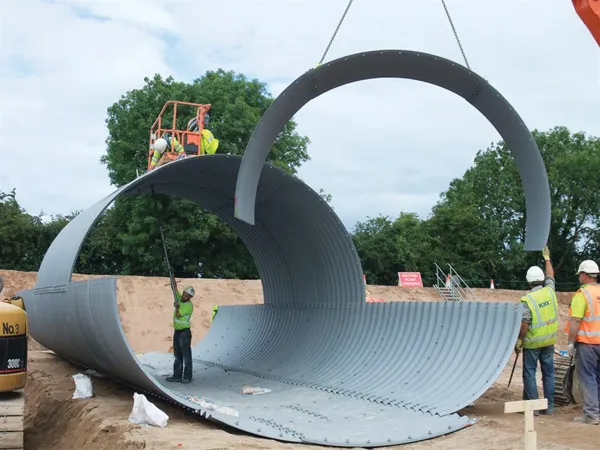The impact of the new Eden Bridge over the River Eden on its flood plain is a key issue to the construction of the Carlisle Northern Development Route (CNDR).
February 16, 2012
Read time: 2 mins

The impact of the new Eden Bridge over the River Eden on its flood plain is a key issue to the construction of the Carlisle Northern Development Route (CNDR). The new 8.25km road is being built west of the city following the flooding of Carlisle in north-west England in 2005, and increased flood risk generally, The local study carried out by the 2759 Environment Agency in the wake of the 2005 floods recommended lowering the flood bank downstream by 1m and removing an old railway embankment to mitigate the future threat to Carlisle but placing added importance on the Eden plain's topography.
As a result of the flood modelling work carried out by2762 Capita Symonds, the technical adviser managing the project for Cumbria County Council, the plan for the new bridge's northern embankment called for a series of culverts with a combined cross section of 160m².
Although the illustrative drawing featured a concrete hatched structure, design engineers Scott Wilson recommended the greater practicality and easier installation of a corrugated steel system as manufactured by2580 Tubosider UK, also the providers of the most economical solution.
"Tubosider's bolted plate is2309 Highways Agency-approved, sufficient to gain approval, and using its detailed plans for assembling each prefabricated component, all 15 culverts are now in place. The final solution was for ten large diameter structures of 6mm thickness and then five smaller ones of 4mm, all ranging in span from 3.32-4.46m.
It's a system1486 Birse Civils has often used before," said design manager Bob Gibson of Birse Civils, contractors for the design and construction of the new road.
Due to open in early 2012, the CNDR will run from the A595 to M6 Junction 44 and is a £176 million (e200 million) public private partnership (PPP) concession contract run for Cumbria County Council by1146 Balfour Beatty through its wholly-owned subsidiary Connect Roads. It will take traffic away from Carlisle centre and improve links between west Cumbria, Scotland and the north-east of England. As winning bidder, Balfour Beatty also takes control of 150km of existing road network and will maintain this for a period of 30 years.
As a result of the flood modelling work carried out by
Although the illustrative drawing featured a concrete hatched structure, design engineers Scott Wilson recommended the greater practicality and easier installation of a corrugated steel system as manufactured by
"Tubosider's bolted plate is
It's a system
Due to open in early 2012, the CNDR will run from the A595 to M6 Junction 44 and is a £176 million (e200 million) public private partnership (PPP) concession contract run for Cumbria County Council by







